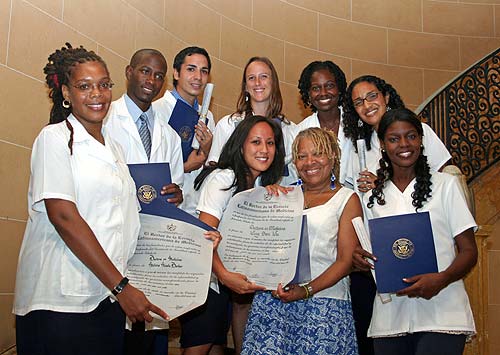
Sweet home Havana: US citizens living in Cuba
While hotels like Havana’s Melia Cohiba are full of Americans who think they are getting an early taste of international travel’s forbidden fruit hundreds of United States citizens have been calling Cuba home away from home for some time now.
Every morning US students studying at the University of Havana walk to classes, State Department diplomats and US Marines drive into the bustling Vedado neighborhood from restful Playa-Miramar, medical students from New York City, Oakland, and New Orleans make their rounds, US tour operators head out to the Jose Marti International Airport to pick up the latest bus full of their compatriots, and a few dozen United States exiles begin yet another day in Havana.
Even with the waxing and waning of bilateral relations over the decades there has never been a complete absence of US citizens on the island.
I showed up as part of the one of the more recent groups making Cuba a temporary home base, as a student of the Latin American School of Medicine. At any one time there are about 100 of us studying medicine here, split between a campus on the far western edge of the Havana and the more central Salvador Allende Hospital in the Cerro neighborhood.
Well before the first group of US medical students showed up in 2001 the United States Interest Section became home to at least a few dozen State Department and U.S. Government personnel. Their presence dates back to President Carter’s administration, who in 1977, thought the Interest Section would be a critical step to opening an embassy. Sadly President Carter’s second term never came to pass and the Interest Section became a centerpiece of contention instead of a functioning embassy, at least up until now…hopefully.
Havana is no stranger to roving bands of American college students on short term study abroad programs. Their unwashed Converse tennis shoes and tattered jeans make Cubans wonder, “Since when did the United States send homeless teens to university?” At any one time the number of US citizens on educational programs in Havana can number from a few dozen to over 100. This contingent is expected to grow significantly as relations continue to improve.
After swelling rapidly in the late 1960’s and into the 70’s the US exile/fugitive community Cuba has been shrinking the past few years. Some members have died, others, like William Potts have called it quits in Cuba and gone back to the United States. Recently Charlie Hill came out of hiding and gave conflicting interviews about his position on a possible voluntary return to the United States. While extradition seems a long way off the prospect of more cooperation between Cuba and the USA on law enforcement matters means this group will not be adding many new members.
The emerging US community in Cuba belongs to tourism operators. President Obama reopened the possibility of group travel, otherwise known as people-to-people tours, during his first term and further loosened the travel restrictions earlier this year. Due to various layers of complex legalese these tours require a Cuban and a US tour guide. This has led to an influx of US tour leaders who move so frequently between the United States and Havana they might as well call the latter home. Now with an end to the travel ban in sight the tourism industry expat clique will soon be in the majority.
The US community in Cuba has even inspired local business that caters to this demographic. Cuba Libro, run by American expat Connor Gorry, is a secondhand English language book store, coffee shop, art gallery, and community center in Havana’s leafy Vedado neighborhood. The last time I was there gossiping with a fellow medical student we watched as an American tour leader led a bus full of our compatriots through the house-cum-bookshop.
Cuba Libro is an anomaly (or “oasis” as it is known among its fans) in Havana. And even though Americans can’t just pop down to Cuba and set up shop Cuban owned private businesses are beginning to catch on to the potentials of the US market. The restaurant El Litoral near the US Interests Section caters to Havana’s only lunch crowd that shows up with neckties. Meanwhile in the sketchier Cerro neighborhood several houses near the Salvador Allende Hospital sell cheap plates of grub to on-call US medical students.
Being a US citizen in Cuba doesn’t always mean living in Cuba as at home. Unlike other capital cities around the world Havana isn’t peppered with American fast food chains, clothing stores, or our ubiquitous advertising. So we mostly bring what we want from home. Our suitcases so full of prepackaged foods it looks as if someone robbed the checkout display at convenience store or took Halloween way to seriously. I’ve often wondered what the Transportation Security Administration inspectors think when they are rifling through my luggage in transit to Havana…another weirdo.
Around 200 years ago there were enough Mexicans living in Old Havana to create a “Little Campeche” and enough Chinese immigrants to establish a “China Town” in Central Havana. US citizens came later, with significant communities in the Playa-Mirarmar neighborhood of Havana and the gated beach community of Tarara; the Island of Youth even boasts a US Cemetery as part of its cultural heritage. Of course all of those places became solidly Cuban shortly after 1959.
Cuba is still a long way off from having a “Little Miami” in Havana. However, considering that the largest group of US citizens living in Cuba are Cuban-Americans and their children, such an experiment could become reality. Right now the only thing certain about the future of United States citizens in Cuba is that there is one.
(From: Havana Times)

